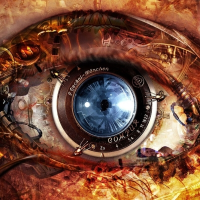
Hi all, I could use some advice from the collective awesomeness of this community. I am going to be running a game using a 40-year-old, published espionage adventure in which the players infiltrate a James Bond-style complex (think labs, worker quarters, production facilities, etc.). The map is large—with a building interior of 70 x 70 squares—and quite complex in terms of doors, stairways, room features, and the like. I've brought the map into Roll20, aligned it, and started playing around with some dynamic lighting barriers. It looks like this so far (with a 5' grid in red to break down the original map's 10' squares): I'm unsure of the best way to proceed and have several questions… What's the best way to bring a print map like this one, with so much detail intended for the GM, into Roll20 so that players see a sanitized view? Should I trace over it in Roll20 and get rid of the map image underneath (or move it to the GM layer)? Should I try to recreate the map entirely using some third-party mapping or <gasp!> CAD software? I'm no artist, but I do have Photoshop and Illustrator, if those help. With a map this large, are there also special performance considerations? And what don't I know to even ask? LOL! At this point, I feel like any input would be helpful. Thanks in advance to anyone who can offer some suggestions. Cheers, -Eric


